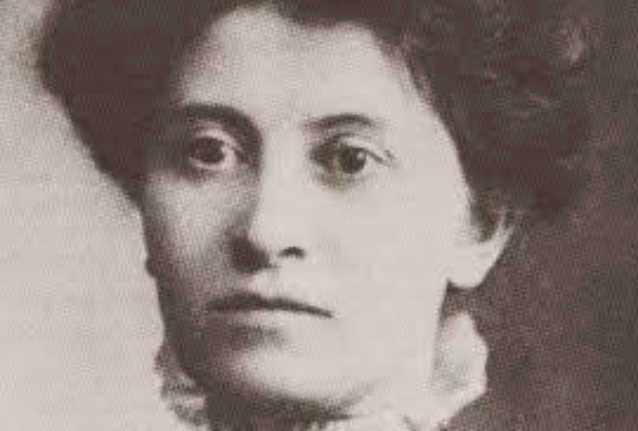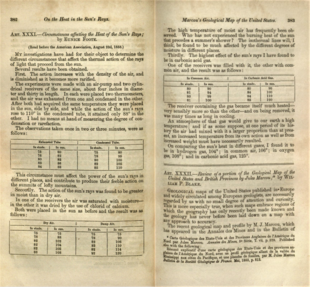
Eunice Newton Foote, a descendant of Sir Isaac Newton through her father, is believed to be the first scientist to study and conclude that rising carbon dioxide gas levels could raise atmospheric temperatures and impact the earth’s climate. Up until 2010, scientists had believed that John Tyndall deserved the credit as the first person to show the involvement of infrared radiation in the greenhouse effect. Although Foote published the results of her experiments as early as 1856, demonstrating the absoprtion of heat by CO2 and water vapor and her hypothesis that changing amounts of CO2 in the atmosphere would alter the climate and despite this being possibly the very first physics publication by an American woman in a scientific journalI wasn’t until her work was rediscovered in 2010 that she was recognized as the pioneer that she was.
Eunice Foote was born in Connecticut in 1819 and was a scientists, inventor, mother and women’s rights campaigner. After marrying Elisha Foote in 1841, Foote settled in Seneca, where she met and befriended Elizabeth Cady Stanton, who was the daughter of Judge Daniel Cady, who was the attorney who had trained Elisha Foote in the law. Although she attended the Rensselaer School and gained a broad education in scientific theory and practice, including laboratory testing, she was denied access to further studies.
From Wikipedia:

An amateur scientist, Foote conducted a series of experiments that demonstrated the interactions of sunlight on different gases. She used an air pump, two glass cylinders, and four mercury-in-glass thermometers. In each cylinder, she placed two thermometers and then used the pump to evacuate the air from one cylinder and compress it in the other cylinder. When both cylinders reached equal ambient temperatures, they were placed in the sunlight and temperature variances were measured. She also placed the containers in the shade for comparison and tested the temperature results by dehydrating one cylinder and adding water to the other, to measure the effect of dry versus moist air. Foote noted that the amount of moisture in the air impacted the temperature results. She performed this experiment on air, carbon dioxide (CO2) (which was called carbonic acid gas in her era), and hydrogen, finding that the tube filled with carbon dioxide became hotter than the others when exposed to sunlight.
She wrote: “The receiver containing this gas became itself much heated—very sensibly more so than the other—and on being removed [from the Sun], it was many times as long in cooling”.
Foote noted that CO2 reached a temperature of 125 °F (52 °C) and that the amount of moisture in the air contributed to temperature variances. In connection with the history of the Earth, Foote theorized that “An atmosphere of that gas would give to our earth a high temperature; and if, as some suppose, at one period of its history, the air had mixed with it a larger proportion than at present, an increased temperature from its own action, as well as from increased weight, must have necessarily resulted.” Her theory was a clear statement of climatic warming caused by increased levels of CO2 in the atmosphere.
Foote described her findings in a paper, “Circumstances Affecting the Heat of the Sun’s Rays”, that she submitted for the tenth annual AAAS meeting, held on August 23, 1856, in Albany, New York. For reasons that are unclear, Foote did not read her paper to those present—women were in principle allowed to speak publicly at the conference—and her paper was instead presented by Joseph Henry of the Smithsonian Institution. Henry introduced Foote’s paper by stating “Science was of no country and of no sex. The sphere of woman embraces not only the beautiful and the useful, but the true”. Yet, he discounted her findings in the New-York Daily Tribune article about the presentation, saying “although the experiments were interesting and valuable, there were [many] [difficulties] encompassing [any] attempt to interpret their significance”.

_______________
Sources:
Wikipedia: Eunice Newton Foote
BBVA OpenMind: Eunice Newton Foote, the Forgotten Pioneer of the Greenhouse Effect, Mar. 8, 2022